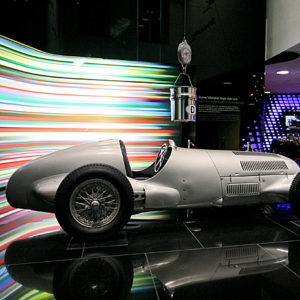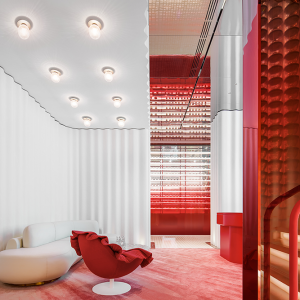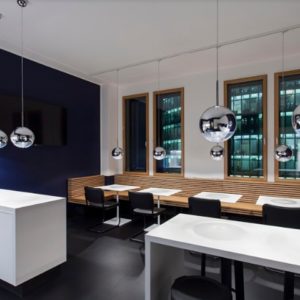


In March 2012, the curators of the “Never Built: Los Angeles,” Sam Lubell and Greg Goldin, approached our firm with the idea of designing their ambitious show to present the many fabulous schemes for the City of Los Angeles that ended up in the garbage bin, historically. We were honored to participate in such a valuable civic endeavor, and agreed to donate our services pro bono.

For several months our team met in our office to conceive a vision for the show that would work on several different levels: it should do justice to the multiple stories behind each scheme, it should allow the viewer to engage in the context, it should convert the limitations of the A+D museum space to the advantage of the show, and it should create a unified viewer experience.

The unified experience is conveyed through creating a single large (though complex) space, with the museum’s back room reinforced as an annex space by painting it black and designating it as a dark room for showing exhibits in low light, and for projecting 3D “fly-through renderings” designed for the show by Shimahara Illustration.

Grounding the context of the city as an experimental platform, we decided to geographically orientate the floor surface and the layout of projects by covering the floor with a black and white 1938 map of the City of Los Angeles, approximating to the chronological midpoint of many of the schemes. The map — so different from today’s dense urban map — shows a city in growth transition with all the granularity of streets, boulevards, undeveloped spaces, and Los Angeles’ unique distortions of topography.

To further suggest an unobstructed viewing space, the two columns within the main room are covered with high rise tower impersonations, the finest of which is a 10-foot-high LEGO construction by eleventh grader, Tommy Musca. This model uses 65,000 LEGO pieces to reconstruct Lloyd Wright’s massive Los Angeles Catholic Cathedral of 1931 — so very different in ambition to the one we have today.

Since the museum would be opaque from the exterior, we decided that we needed a compelling representation of the show theme. The idea of a large-scale lenticular surface appealed to a notion of movement, technological and experiential innovation, and the car culture of Los Angeles that has had such a role in the evolving face of this city. One side announces the show, and the other presents a monorail image suggesting an alternative future that might have been.
Designed by Clive Wilkinson Architects
http://architizer.com/projects/never-built-los-angeles/





Add to collection










